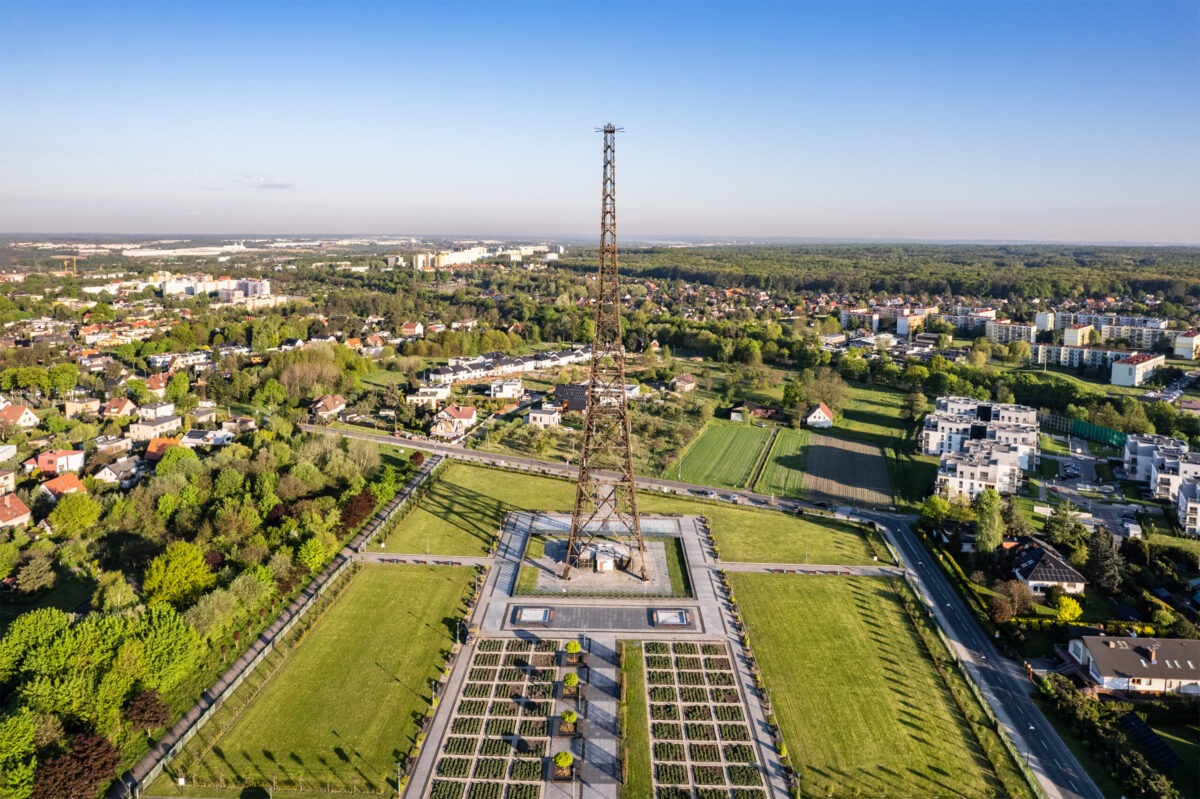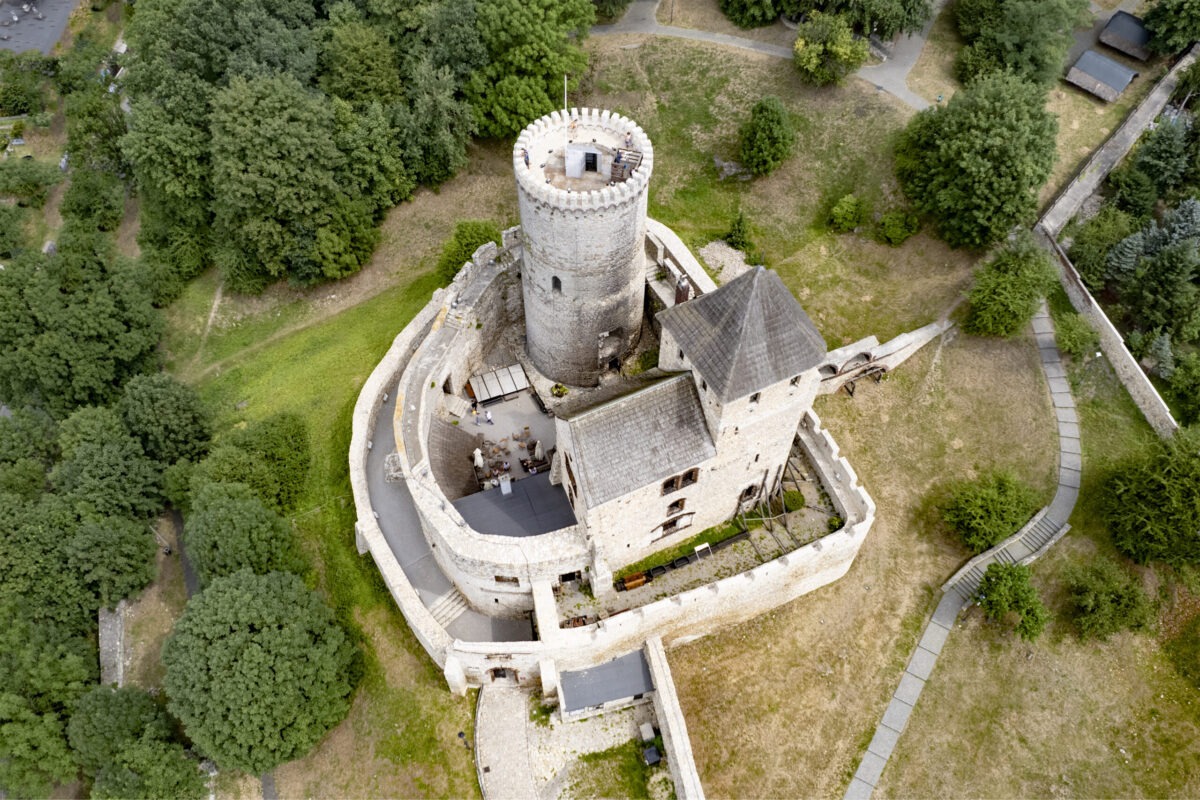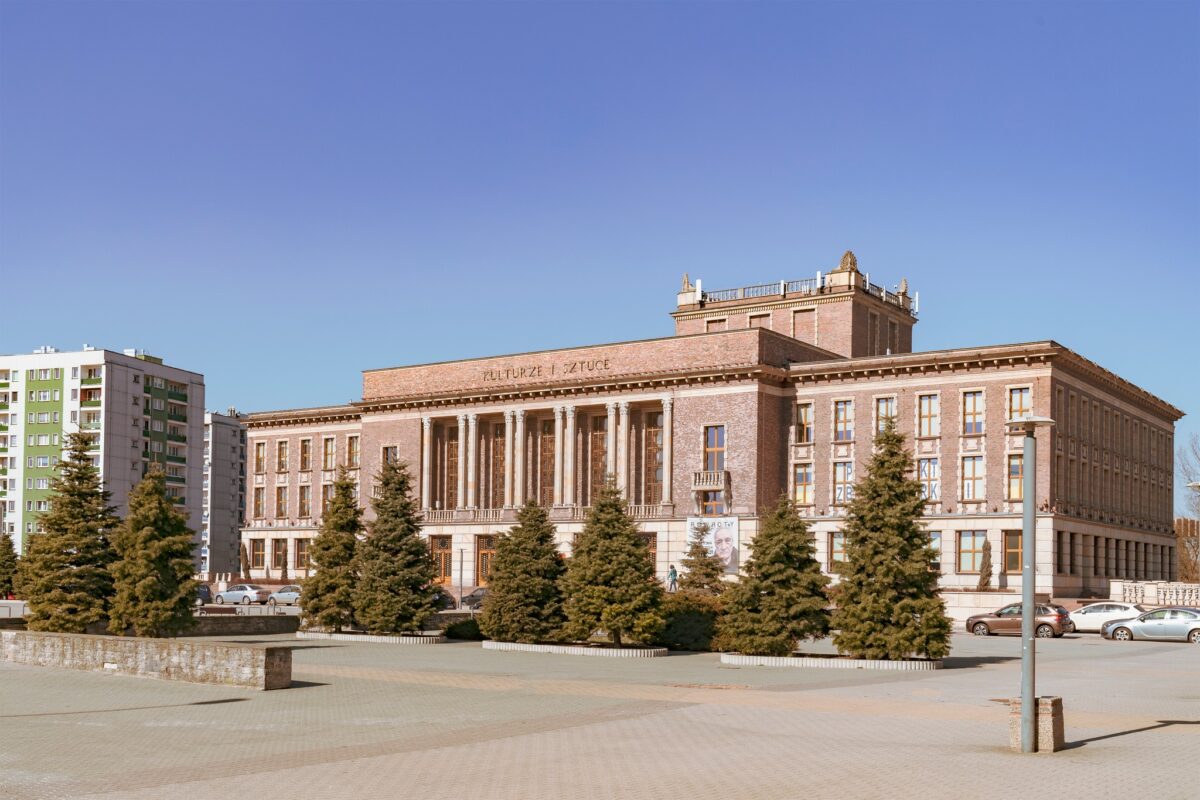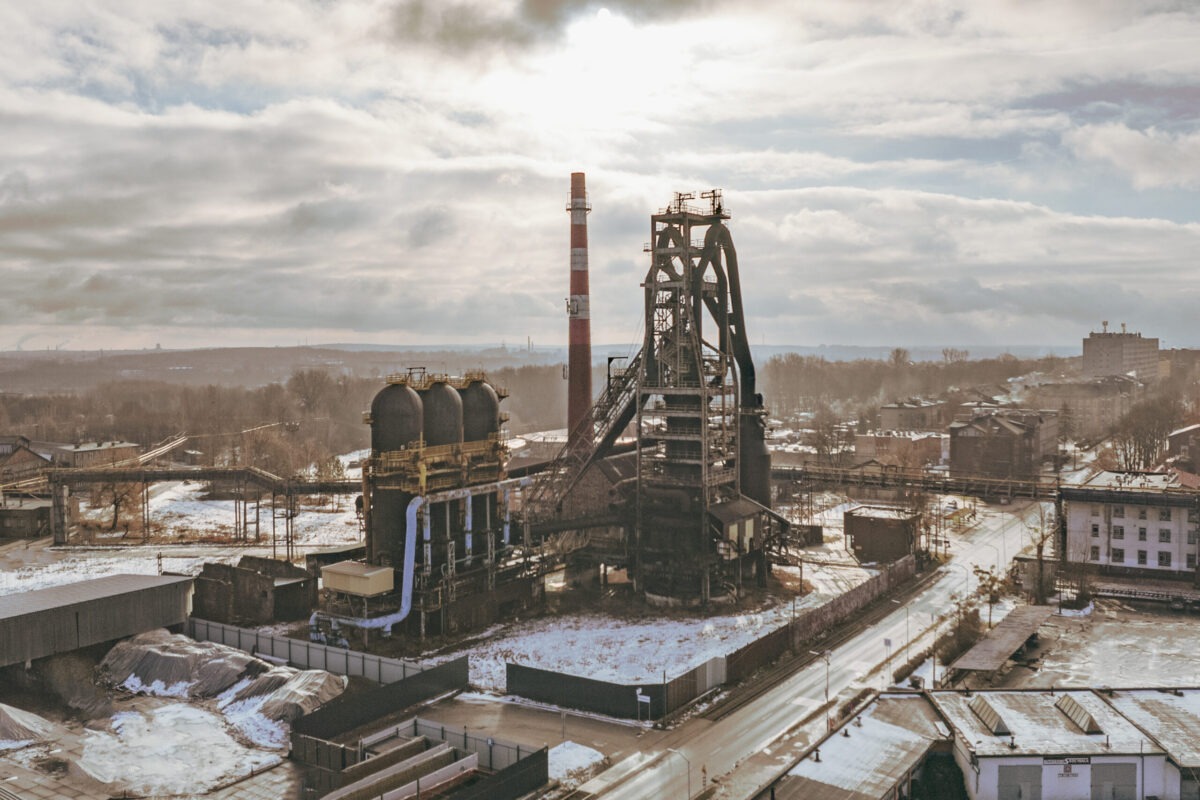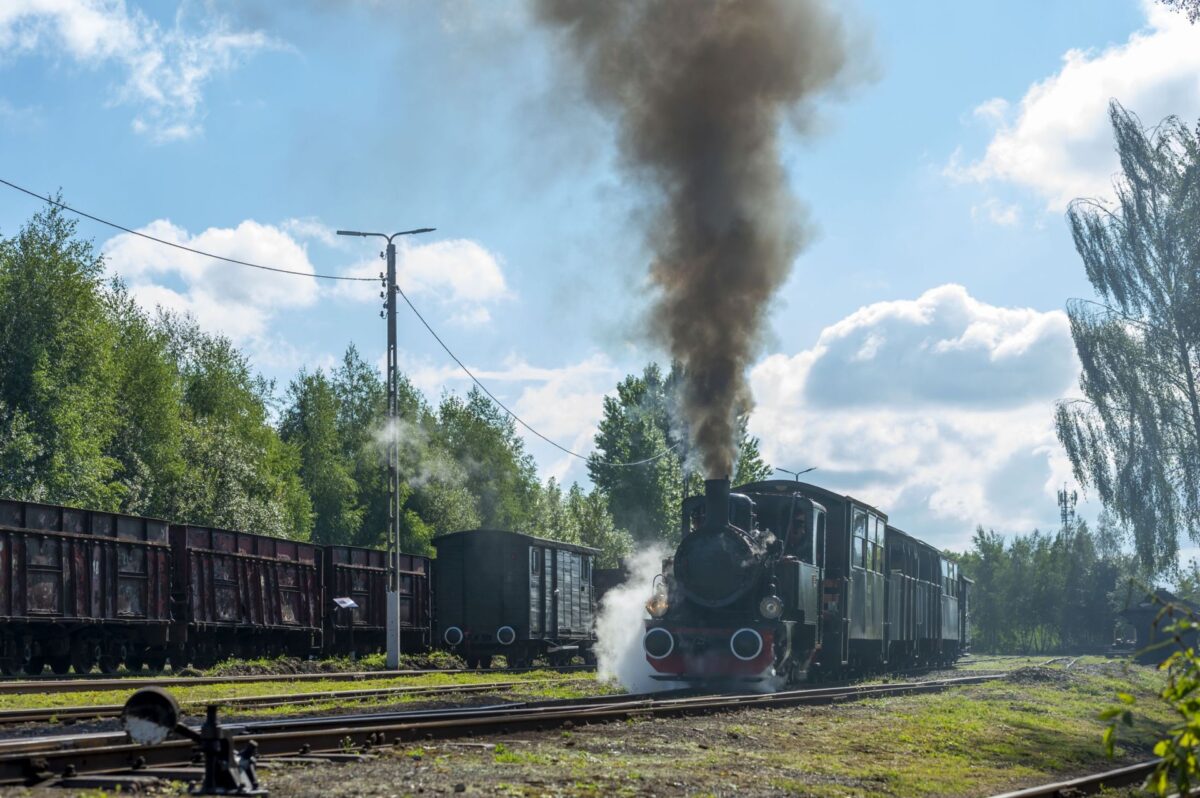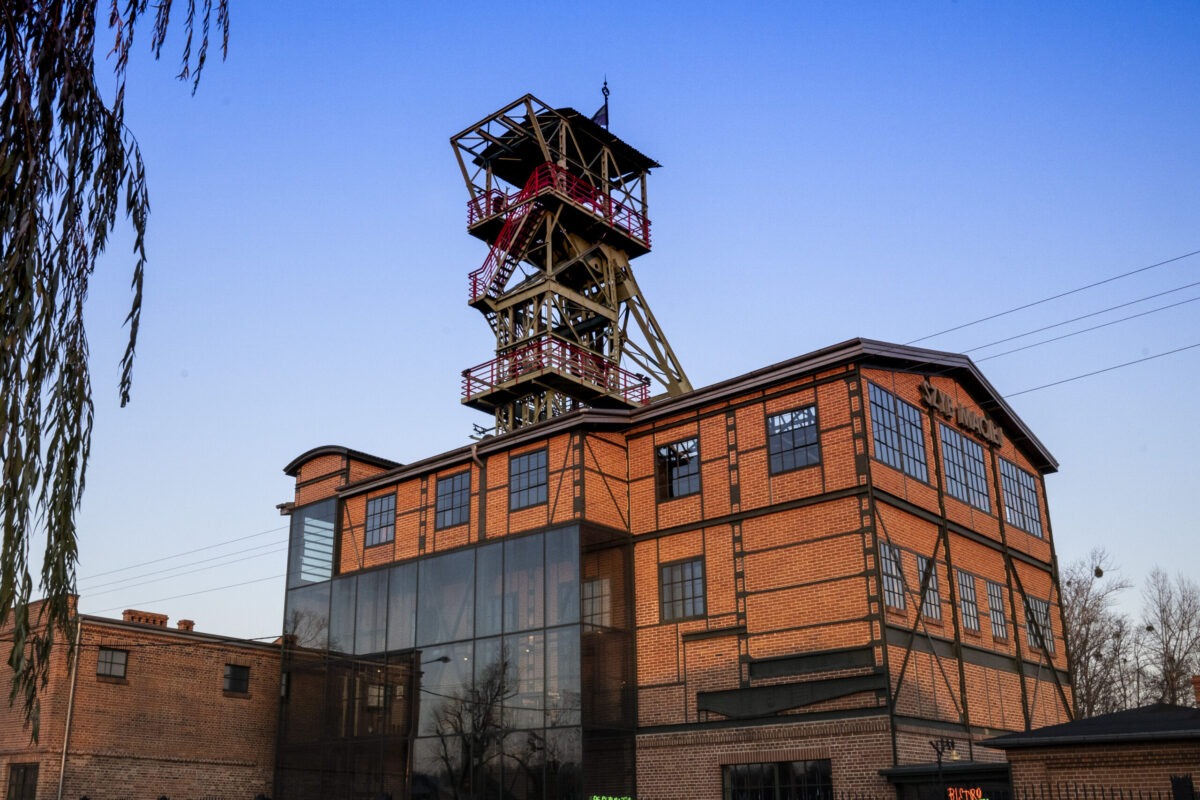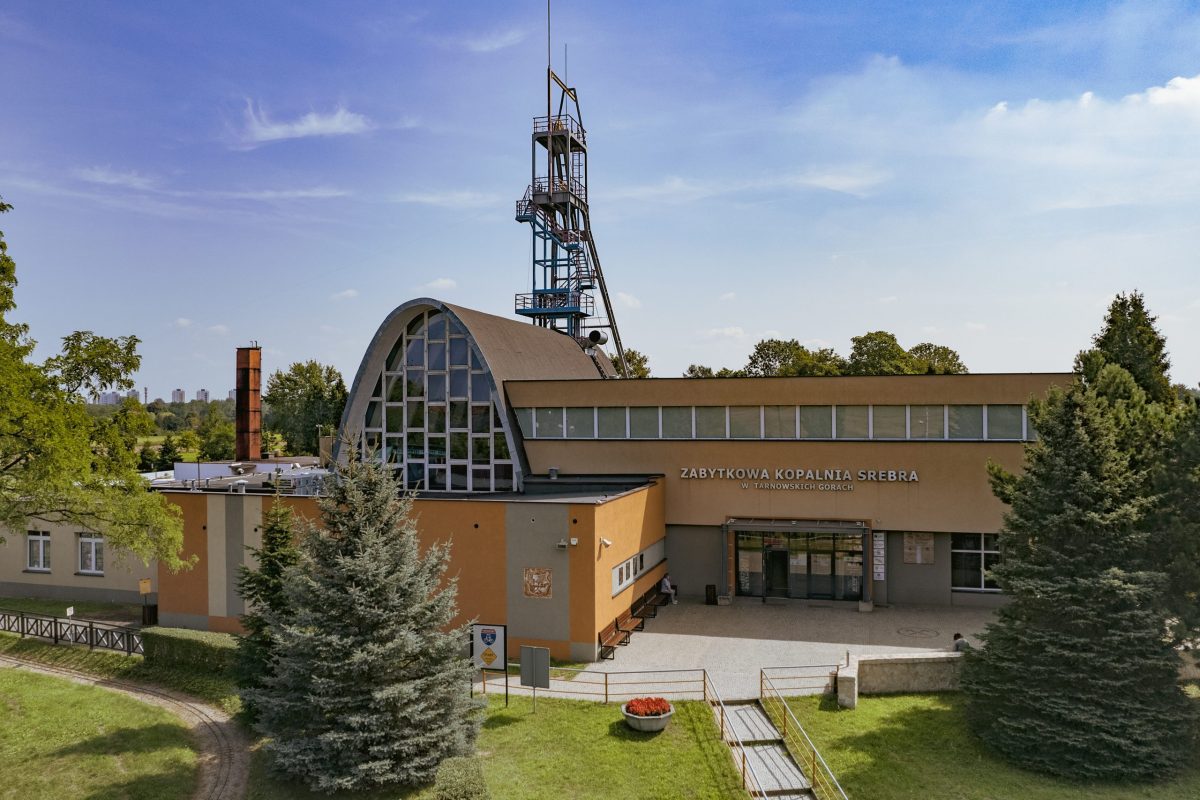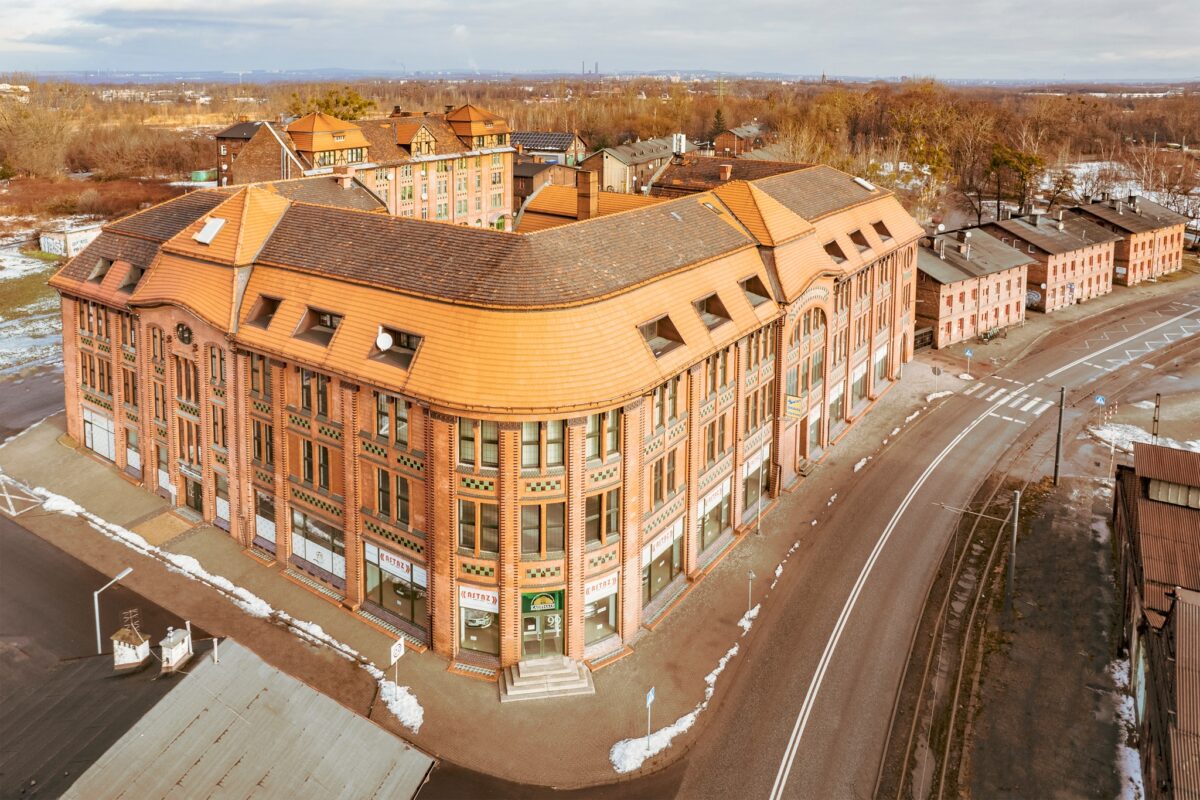VisitGZM
Explore the Metropolis with us!
VisitGZM brings together over 350 objects from the GZM area in one place, those commonly known but also not obvious, creating a variety of offers for spending leisure time and pursuing interests. Check what is worth visiting, where to learn about the history of the region, and where to relax.
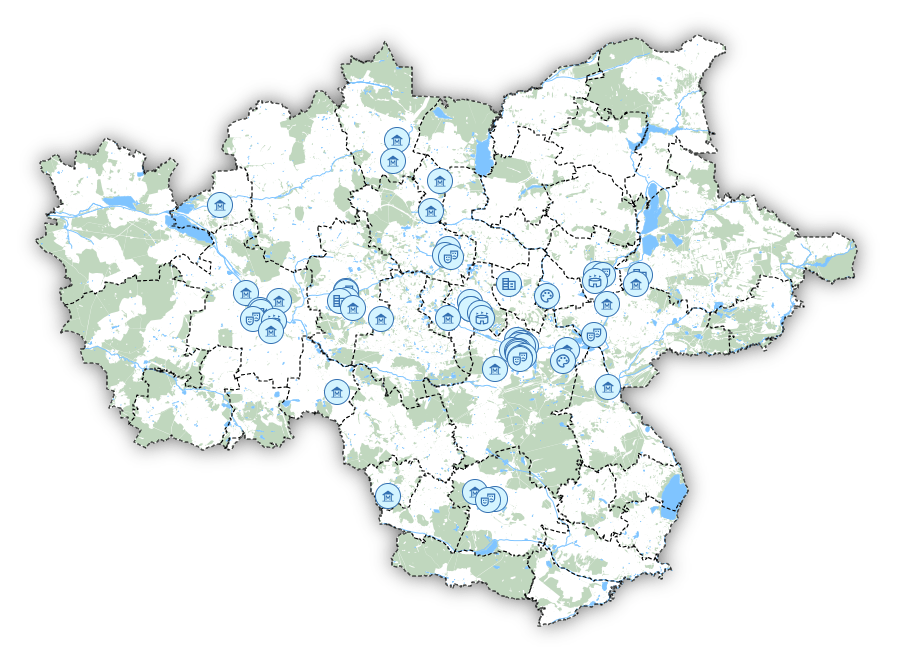
#What is VisitGZM?
6 thematic categories – find what interests you
VisitGZM is primarily a map with over 350 objects presenting the diversity of the Metropolis and showing the variety of leisure activities that it has to offer and interests that can be pursued there: from history to the present, from activity to relaxation. The database of objects is divided into 6 thematic categories 1) monuments, modern architecture, 2) industrial heritage, 3) culture, 4) sports and recreation, 5) attractions (other), 6) cultural routes, within which objects were assigned to subcategories.
On the map – using the filters located in the top bar – you can see all objects from a given category or select subcategories of interest to you. In addition, it is possible to filter by name, municipality and attributes (paid and free entry). We have also selected must-see sites when exploring the Metropolis – use the “Must-see” filter.
This is the most extensive category of sites. Explore castles, palaces, distinctive modern and contemporary buildings, as well as unique urban layouts. See the region’s important religious buildings, sculptures and monuments, as well as military sites.
Read more about monumentsRead more about contemporary architecture
Discover the industrial history of the region – on the map you will find key sites representing former industry, company-sponsored settlements, mine shafts and water towers, revitalised sites and those awaiting new functions, sites presenting water and railroad infrastructure.
Discover the most important museums, theatres, concert halls, art galleries and art house cinemas, as well as multipurpose venues, performance halls and stadiums hosting major concerts and other cultural events.
Find places for walks and hikes, to practice water sports or relax by the water. See where to skate, play golf, or where to climb or rollerblade.
Explore unique places in the GZM – planetarium, palm house and botanical gardens, zoo, amusement park, attractions for children, cable car and wind tunnel.
There are two important routes in the GZM – the Industrial Monuments Route and the Wooden Architecture Route See the sites that are part of them.
#Dowiedz się więcej
Monuments
The vast majority of historical buildings in Upper Silesia and the Dąbrowa Basin (Zagłębie Dąbrowskie) date from the second half of the 18th century to the early 20th century. This was the result of intensive industrialisation, which influenced urbanisation. Investment in industrial plants and the influx of people in search of work resulted in the gradual transformation of villages and towns into urban organisms. In addition to industrial facilities, settlements and workers’ colonies were built in large numbers in their vicinity, as well as individual buildings, the so-called familoki [familok – a multifamily house built for coalminers] and bourgeois tenement houses, which formed a compact, frontage buildings of the centres of our cities. During this period, another type of buildings were erected – palace and park complexes, on a large scale and with great architectural craftsmanship. They testified to the power of the industrial magnates of the time and their ambitions, as well as their contacts with the European aristocracy.
You can read about the numerous testimonies of the presence of mining, metallurgy and related industries in Upper Silesia and the Dąbrowa Basin (Zagłębie Dąbrowskie) in: industrial heritage, remembrance of the industrial past, industry creators, company-sponsored architecture.
An important development factor for Silesia and the Dąbrowa Basin (Zagłębie Dąbrowskie) was the construction of railroad lines and stations. Although it must be remembered that today’s GZM area was the meeting point of the partition borders of the Habsburg, Prussian and Russian empires (today it is also another spatial sign of history – the so-called Three Emperors’ Corner at the junction of the borders of the municipalities of Mysłowice, Sosnowiec and Jaworzno). This fact significantly influenced the determination of new railroad routes. A significant example of taking into account the shape of the borderland at the time was the railroad link between Ząbkowice and Szopienice, which was built to bypass the territory of the Austrian Empire by trains traveling from Prussia towards Warsaw. This is what contributed to the construction of the railroad line and the stately station in Katowice – later the heart of the Metropolis. It operated until 1972, and today is known as the old train station, which has been transformed into an impressive modern service centre.
After Poland regained its independence in 1918, and even more so after the plebiscite and the three Silesian Uprisings, a new division of local cities and industrial goods was forced between Poland and Germany. There was a need to merge areas that were different in almost every respect (with different infrastructural, legal, monetary, administrative systems, etc.). Last but not least, there was technological and architectural rivalry between German and Polish circles of power. Therefore, the 1920s and 1930s were another period that clearly marked the spatial and functional structure of today’s GZM and left a significant imprint on its urban landscape. The material culture of the interwar period is primarily the so-called moderne (early and advanced), known as functionalism. It is a pure architectural form, “naturally” enriched, through elements resulting from the construction, without unnecessary ornaments and additions, with rhythmic and symmetrical divisions, often referring to marine shapes and windows, and always with great glazing and illumination, as well as practical interior solutions creating good living conditions. In this regard, impressive examples of residential buildings, public facilities and churches can be found in almost every city of the GZM. Katowice is the leader here, with its designated Route of Modernism, including the “skyscraper”, the garrison church and the villas of Tadeusz Michejda (a prominent architect at that time). The modernist buildings of some districts of Katowice are not inferior in beauty and elegance to the buildings of Gdynia, considered the pearl of Polish modernism. Numerous interesting examples of modernism can also be found in Bytom, Chorzów, Gliwice Mysłowice, Sosnowiec, Zabrze.
Less common, but extremely valuable and beautiful objects include Art Nouveau buildings from the early 20th century. This includes tenement houses with subtle and graceful decorations: stained-glass windows, plant motifs, glazed tiles, metalwork. Unfortunately, a significant part of the buildings from this period was demolished in the early post-war years. However, interesting examples have been preserved, including in Katowice, Zabrze and Bytom.
Yet another group of monuments and historical objects are buildings from the Middle Ages and the Renaissance. Some of them – for obvious reasons – are already ruins, but some are well preserved. The most valuable ones can be visited, e.g. in Będzin, Sławków, Siewierz, Gliwice, Bytom.
Contemporary architecture
The category of contemporary architectural sites includes buildings erected after World War II until today, i.e. socialist realism, postmodernism, modernity or a continuation of pre-war projects.
Over the years, buildings from the communist years are becoming more and more charming, especially those constructed between the 1950s and 1970s. 1990s. Many of them are becoming objects of modern culture (they are not yet monuments, but objects worth preserving for architectural or historical reasons). They often become symbols widely recognised and identified with the place. Interestingly, buildings from the 1960s and 1970s, Despite the fact that they were in many cases built in the so-called era of shortages and austerity, often captivate with their functionality and ingenuity, and sometimes even iconicity.
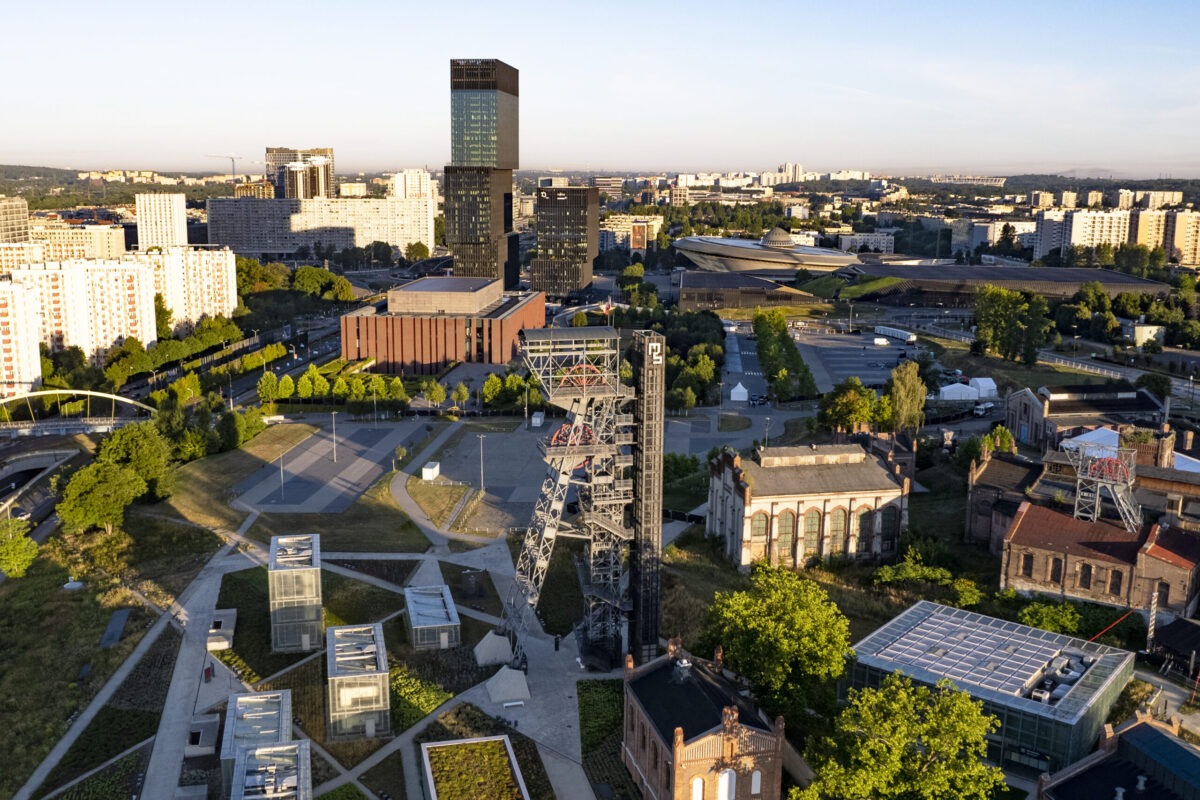
Katowice, Culture Zone (International Congress Centre (MCK), the National Polish Radio Symphony Orchestra (NOSPR), the Silesian Museum, Spodek (Sports And Entertainment Arena)) and office buildings .KTW
It is enough to look at such projects from that period as the Spodek Arena in Katowice, the Palace of Culture in Dąbrowa Górnicza or the A and B estates in Tychy. There is also a number of contemporary buildings such as: KTW, MCK, NOSPR, CINIBA in Katowice, Arena hall in Gliwice, Będzin Arena, new Silesian Stadium. They were built in the last decade and quickly became part of the metropolitan skyline. Time will tell which of them will go down in history as icons of our era.
Naturally, there are fewer new buildings than historical ones, being a sign of the layering of different eras, styles and geopolitical conditions (such as partitions and occupation). Nevertheless, it is worth observing the changes taking place before our eyes and experiencing the space in which we live on a daily basis.
Industrial Heritage
The processes of industrialisation and urbanisation in Upper Silesia and the Dąbrowa Basin (Zagłębie Dąbrowskie) have proceeded with increasing intensity since the second half of the 18th century. It influenced the fate of many generations of residents, industrialists seeking opportunities for lucrative and prestigious investments, professionals delegated to build mines, steelworks, processing plants and accompanying infrastructure, and masses of workers coming here for work. This determined the character of our region and its current spatial structure. The consequences of over 200 years of presence of the so-called heavy industry are felt and noticeable in the appearance of our cities – both those related to the “dark side” of industry, and those that are our heritage and potential today, such as numerous post-industrial buildings, often with very high architectural and construction values. Some have new functions, and some remind us of work and life in a bygone industrial era.
the 19th century was a time of railway development, also related to the developing industry and influencing the formation of cities. As a window to the world and a means of mass exchange of goods, it became an important competitive advantage for the towns through which it ran. Economic life in this area was revolutionised by the Warsaw-Vienna Iron Road (from Warsaw to the border with the Prussian partition, where the last border station was Maczki – today a district of Sosnowiec) and the Upper Silesian Railway (running, among others, through Mysłowice, Katowice, Hajduki, Świętochłowice, Ruda , Zabrze, Gliwice and then Kędzierzyn Koźle, Opole to Wrocław). One of the factors in determining the routes were the partition boundaries that converged on today’s GZM area, an example of which is the Three Emperors’ Corners, on the border of Sosnowiec and Jaworzno, another fascinating historical landmark.
The REMEMBRANCE OF THE INDUSTRIAL PAST tab presents the Industrial Monuments Route together with Industriada, a contemporary initiative promoting the most valuable or interesting post-industrial sites to be preserved for future generations as witnesses to history.
An important event of the industrialisation period was the establishment by the Prussian authorities of the State Mining Authority with its headquarters in Wrocław. In 1779, Wilhelm Friedrich von Reden became its head. It was he who brought John Baildon from Scotland and together with him introduced many innovations to industrial processes. It is not without reason that both of them are considered the fathers of modern metallurgy. In the 19th century, industrialists increasingly settled and operated in Upper Silesia and the Dąbrowa Basin (Zagłębie Dąbrowskie): professional staff, builders, machine and equipment constructors, and above all, tycoons investing in industry. Many of them came here from various parts of Europe: England, Italy, Prussia, Belgium, but local families also took part in the development. The dynamic history of the development of mining, metallurgy, coking industry, transport and machine production has shown their enormous entrepreneurship, efficiency, innovation and far-sightedness. Despite the lack of facilities that we take for granted, such as fast means of communication, easy flow of information, or computers, they kept abreast of and introduced technical innovations and brought there the most modern equipment of the time, such as: the first coke-fired blast furnace (built by John Baildon), innovative designs of water towers, and hydraulic engineering solutions, many still working today.
As a result, Upper Silesia and the Dąbrowa Basin (Zagłębie Dąbrowskie) became one of the leading industrial areas in Europe (along with the Ruhr area and Pas-de-Calais). Existing mines, steelworks and coking plants merged with each other, creating large and leading industrial concerns. However, it should be remembered that it was a different territorial reality: first, the changes in the nationality of the borderlands of Silesia and Lesser Poland, the partition of Poland, and then the border changes after the three Silesian Uprisings. After 1922 – with the resolution of disputes between Poland and Germany – another division of cities and industrial goods was forced between the two countries, depending on the new course of the borders.
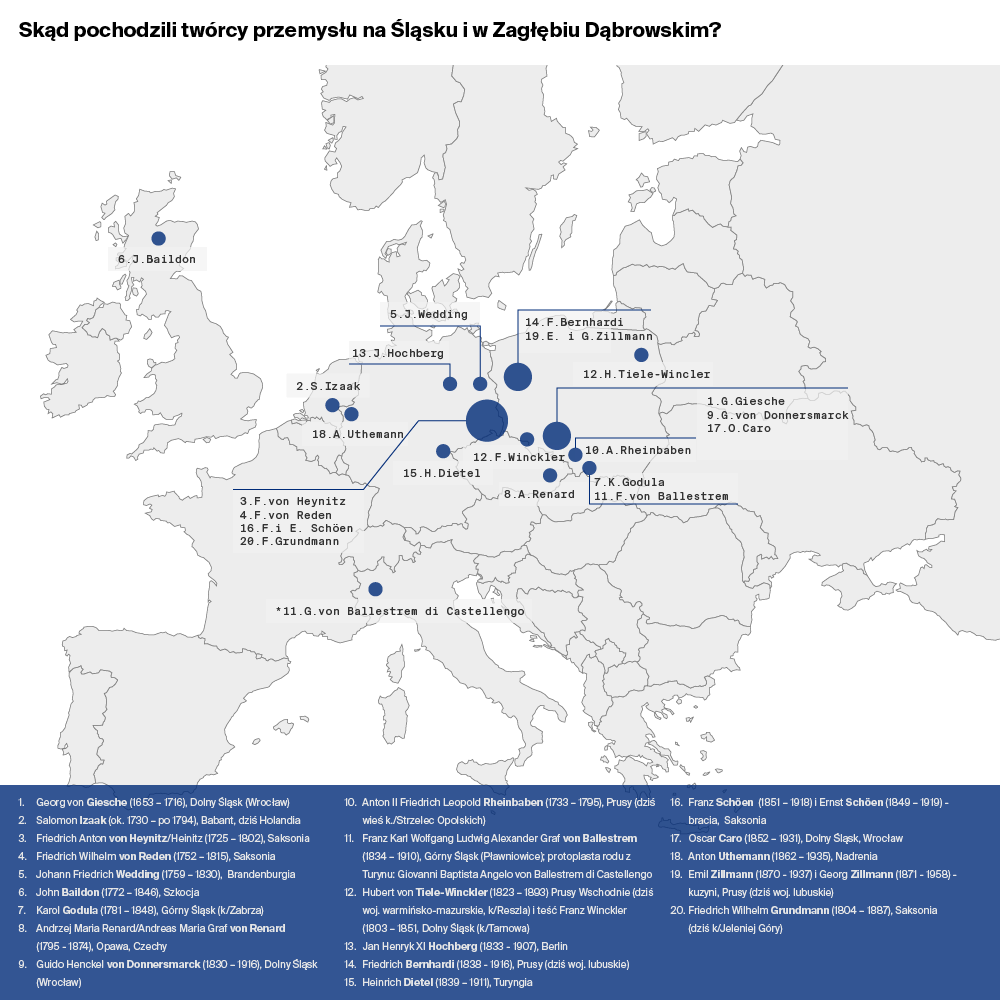
Where did the industry creators in Silesia and the Dąbrowa Basin (Zagłębie Dąbrowskie) come from? Authors’ own study.
The most famous families and figures, and at the same time the creators of industry in Upper Silesia and the Dąbrowa Basin (Zagłębie Dąbrowskie) (starting from the 18th century), are: Mieroszewski family, Ballestrem family, Donnersmarck family (i.e. Thursday Market in Spiš), Schaffgotsch family, Hochberg family, Giesche (i.e. Giza), Shoen family, Karol Godula, Friedrich Wilhelm Grundmann, Tiele-Wincler family (formerly Franz von Winckler), as well as Heinrich Gotthold Dietel, Shoen family (Ernest, Wilhlem, Oscar). It is also worth mentioning Walenty Roździeński from the turn of the 16th and 17th centuries. He was a metallurgist, the owner of a forge and the manager of the steelworks at the manor house of Andrzej Kochcicki from Koszęcin, and – interestingly – the author of a poem – an extraordinary source describing the arcana of technology, the state of metallurgy and mining at that time and the work related to it (it was the first such work in Polish).
The INDUSTRY CREATORS tab presents biographies of the best-known figures of industry at the time and their selected investments from Upper Silesia and the Dąbrowa Basin (Zagłębie Dąbrowskie) (many of them were also active in Lower Silesia and other regions of many countries).
The development of industry was an excellent opportunity to invest and increase wealth, but it was also often associated with great social and even philanthropic activity undertaken by industrialists for the benefit of the workers they employed. An expression of this are the colonies and workers’ housing estates built on their behalf, as well as buildings today known as public buildings (schools, kindergartens, orphanages, night shelters, shops, inns, laundries, and churches). Such investments ensured high living conditions by the standards of the time, which in turn resulted in better work performance, but also contributed to the creation of social stability, as well as to the gradual process of urbanisation and the transformation of villages into cities.
The COMPANY-SPONSORED ARCHITECTURE tab presents a brief description of the type of buildings such as colonies and workers’ housing estates, as well as the history of their creation. This is a selection of the most interesting and spectacular examples from Upper Silesia and the Dąbrowa Basin (Zagłębie Dąbrowskie) (although in varying states of preservation).
Company-sponsored Architecture
An integral element related to industrialisation was the so-called company-sponsored architecture, built from the end of the 18th century to the beginning of the 20th century and financed by wealthy industrialists. By multiplying their profits and investing in more projects, they secured the basic needs of the industrial staff and the workers employed by them (especially housing needs, but not only). This, of course, resulted in greater work efficiency while ensuring good living conditions. It was a highly innovative and pro-social approach at that time.
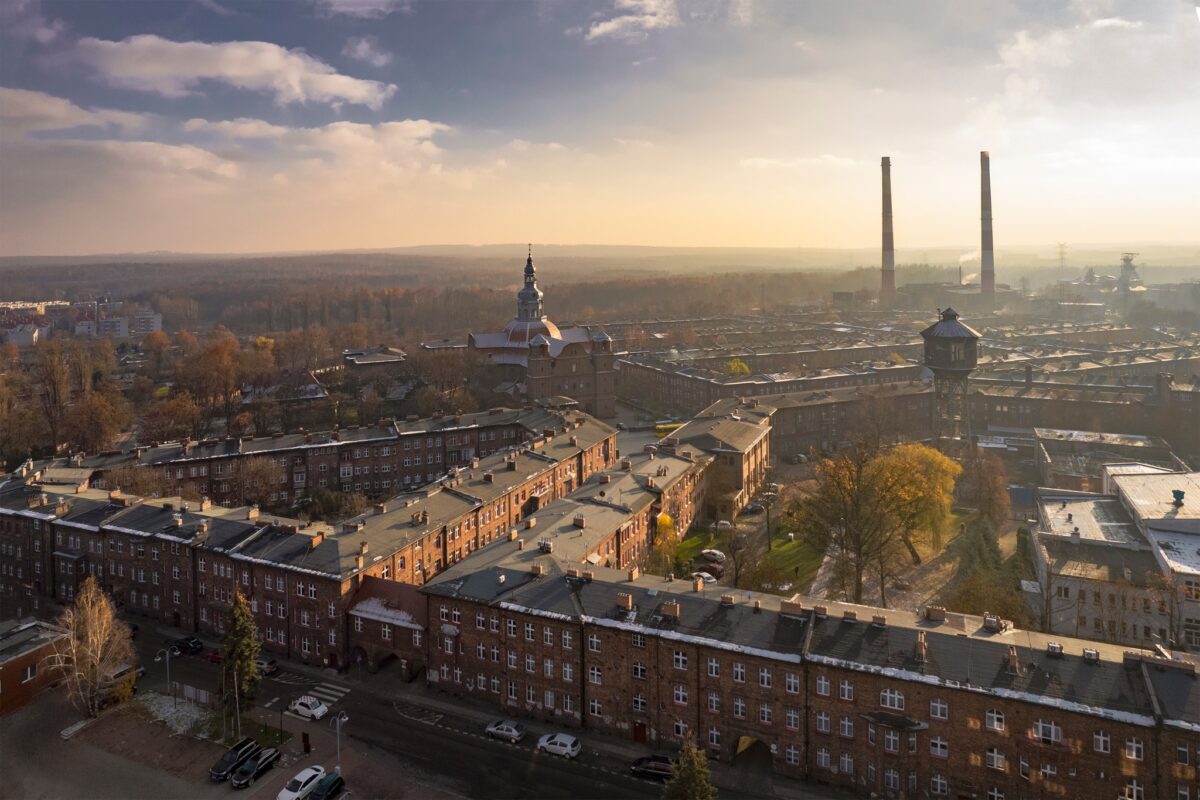
Katowice, Nikiszowiec Housing Estate
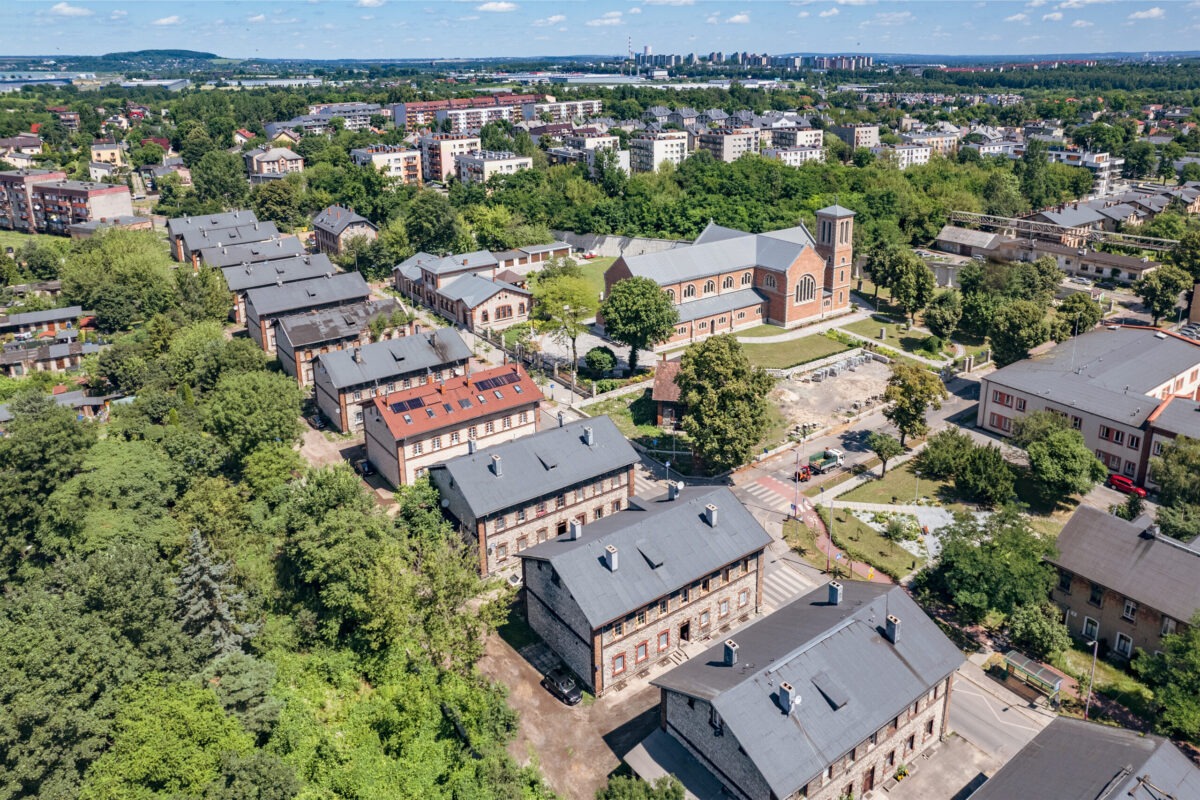
Czeladź, The Piaski Housing Estate
The history of this type of construction was linked to the process of settling the Silesian province by settlers from Prussia. This was a long-term Germanisation campaign initiated by Prussian King Frederick II; hence the name of the process: “Frederician colonisation,” and the villages created as a result were called “Frederician villages” (at the same time, as part of this action, important administrative reforms were also carried out, promoting the development of agriculture and industry).
During the period of rapid industrial development, mainly workers’ colonies were built (smaller complexes, usually consisting of only residential houses), workers’ housing estates (larger complexes, enriched with social facilities, such as laundries, baths, shops, places for baking bread and cakes, etc.) Independent social, religious, educational and service buildings were also built, such as churches, inns, schools, orphanages, dormitories for bachelors, etc.
The basic type of house for workers was a familok [familok – a multifamily house built for coalminers]: most often a one-, two- or three-storey building, made of brick, on a rectangular plan, with a gable roof or a flat roof (elevations covered with facing bricks). The flats had two or three rooms (composed of a large kitchen and rooms), usually with toilets on the landing; in earlier colonies, water was available in street pumps and then was supplied to the building (e.g. thanks to water towers). Usually, the flat included a utility room (a storage room, a “pigsty”), and, if possible, a small garden. The flats in officials’ houses were of a higher standard (they were equipped with a bathroom, individual yard, larger garden).
The second type of building in workers’ housing estates was a villa-like house for several families, 1- or 2-storey, brick, with a sloping roof (usually hipped).
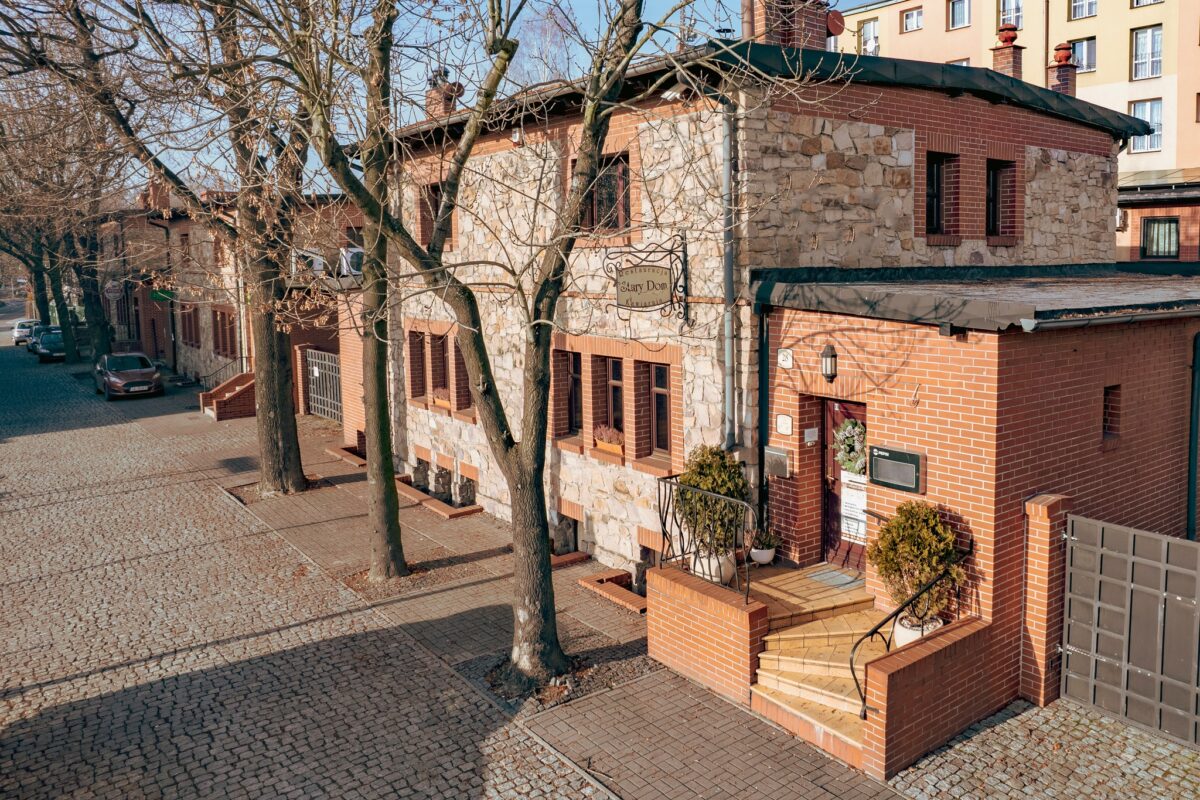
Ruda Śląska, Ficinus Housing Estate
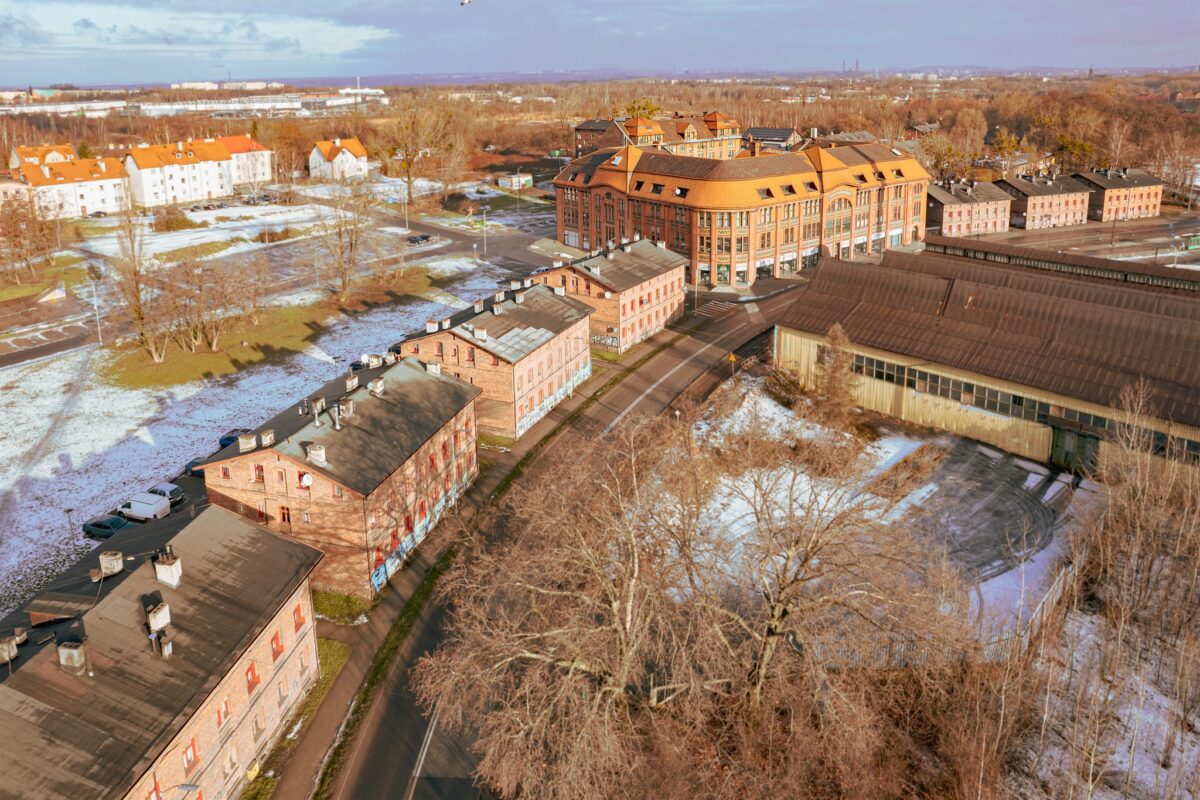
Ruda Śląska, The workers’ housing estate with the Kaufhaus department store
Over time, other forms of financing housing for workers emerged: not only were they funded by industrialists, but they were also built by the industrial plant under the “Beihilfe” system, involving workers in their construction by taking out a low-interest loan (to become the owner of the flat after repayment).
With the intensive development of industry and the influx of workers from remote areas, the need for housing grew even more. Collective accommodation houses (doss houses) and private rental houses (e.g. the buildings in Królewska Huta) began to be built. In Prussia, there was a provision (Settlement and Construction Act of 1904) that employers should take care of housing for their employees, especially educated ones. Architects followed the traditions of local construction, English cottages, or created a native style.
Among the prominent designers of the time were the well-known architects Georg and Emil Zillmann, Hans von Poellnitz – head of the construction management at the Ballestrem concern, Karl Grosse, Bruno Taut, Antoni Jabłoński-Jasieńczyk.
The initiators and founders of company-sponsored architecture were the families that the leading industrialists came from, such as: Donnersmarck, Schön, Dietl, Schaffgotsch, Giesche, Ballestrem.
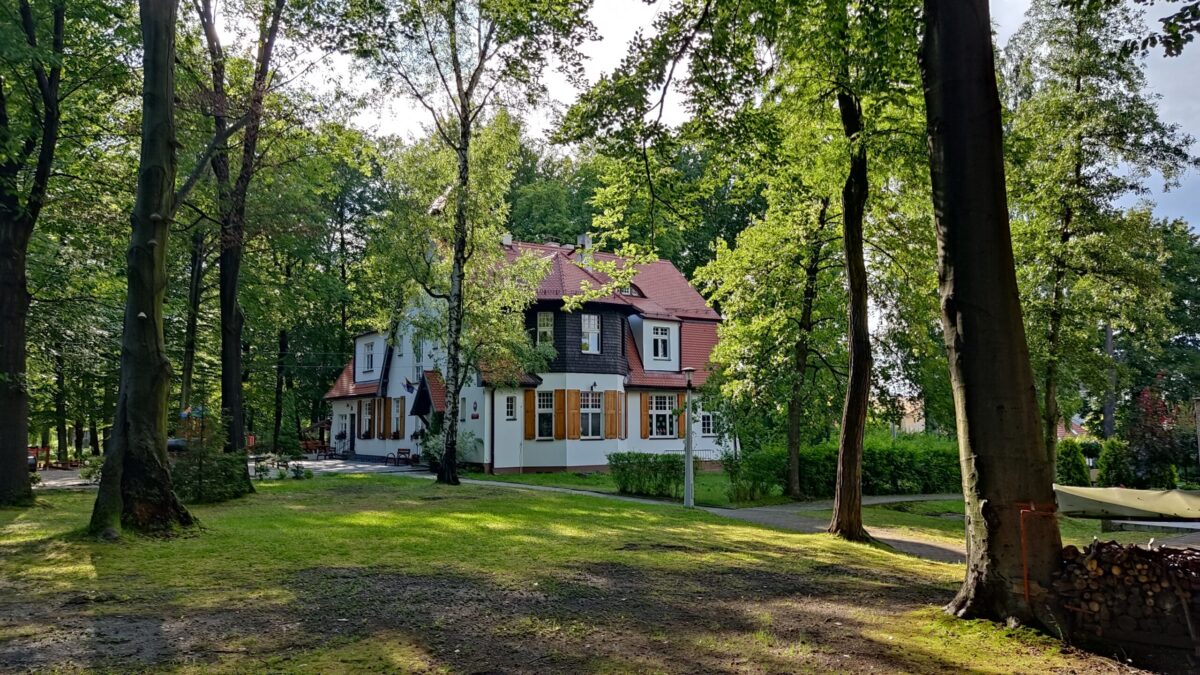
Katowice, Giszowiec Housing Estate
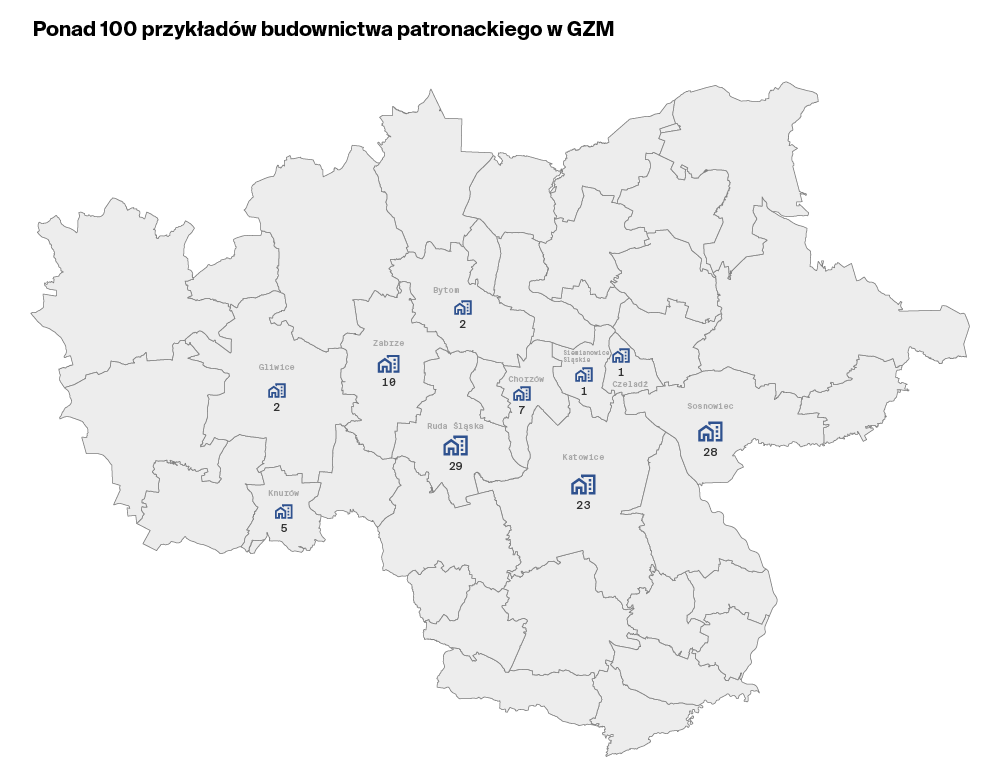
List of workers’ colonies and housing estates in the GZM area (109 places), based on information from PTTK (Polish Tourist and Sightseeing Society).
At present, there are still more than 200 examples of the so-called company-sponsored architecture in the Silesian Voivodeship, mostly from the turn of the 19th and 20th centuries (especially from 1890 to 1914). The most interesting ones are located in the following GZM cities: Bytom (3), Chorzów (7), Czeladź (1), Gliwice (2), Katowice (23), Knurów (5), Ruda Śląska (29), Siemianowice Śląskie (1), Sosnowiec (28), Zabrze (10). There are approximately 200 of them in the entire Voivodeship. Some of them (but in the vast minority) are under conservation protection today.
Remembrance of the industrial past
With the restructuring of the industry and the political transformation in the 1990s, the vast majority of plants closed down. Today, many of them constitute valuable industrial heritage and eloquent witnesses to the history of this area. Some of these buildings are being used for entirely new functions: service, business or exhibition, sometimes residential (lofts), some retain their former purpose, bringing the work of mines and steelworks closer, while other buildings are still waiting to be “rediscovered” and developed.
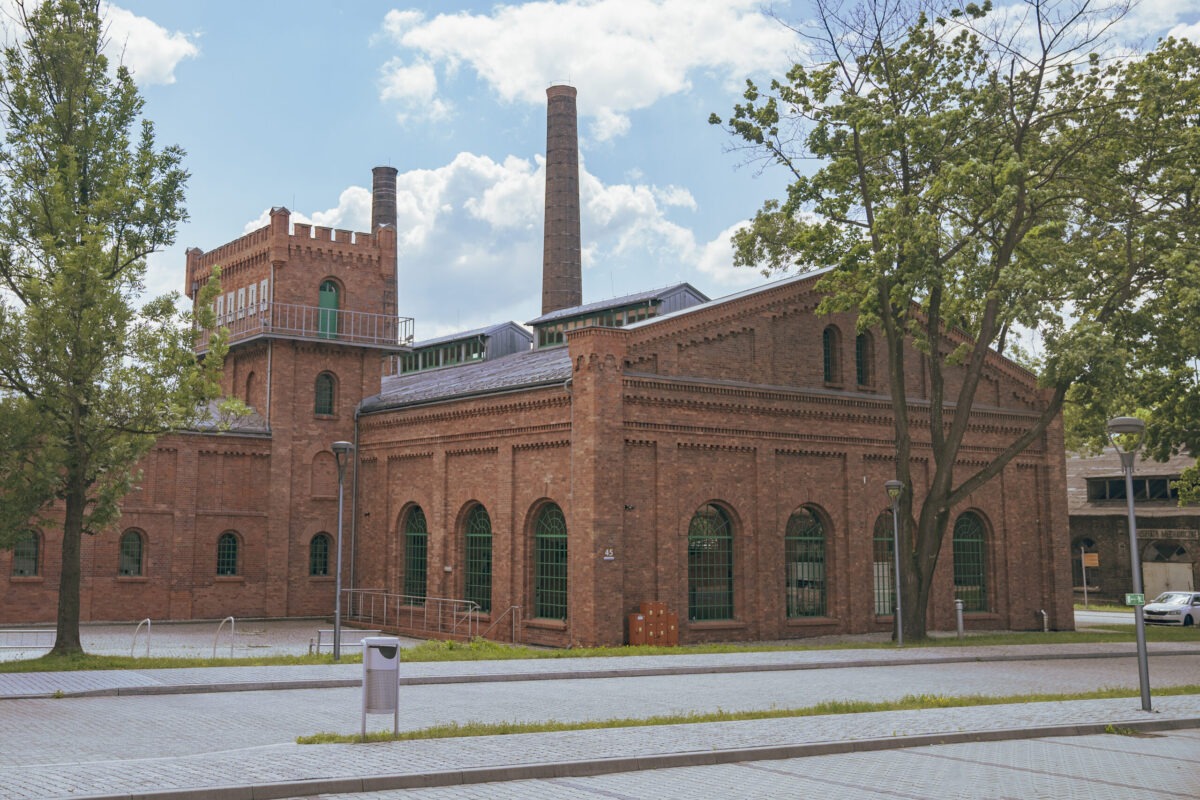
Czeladź, “Elektrownia” Contemporary Art Gallery
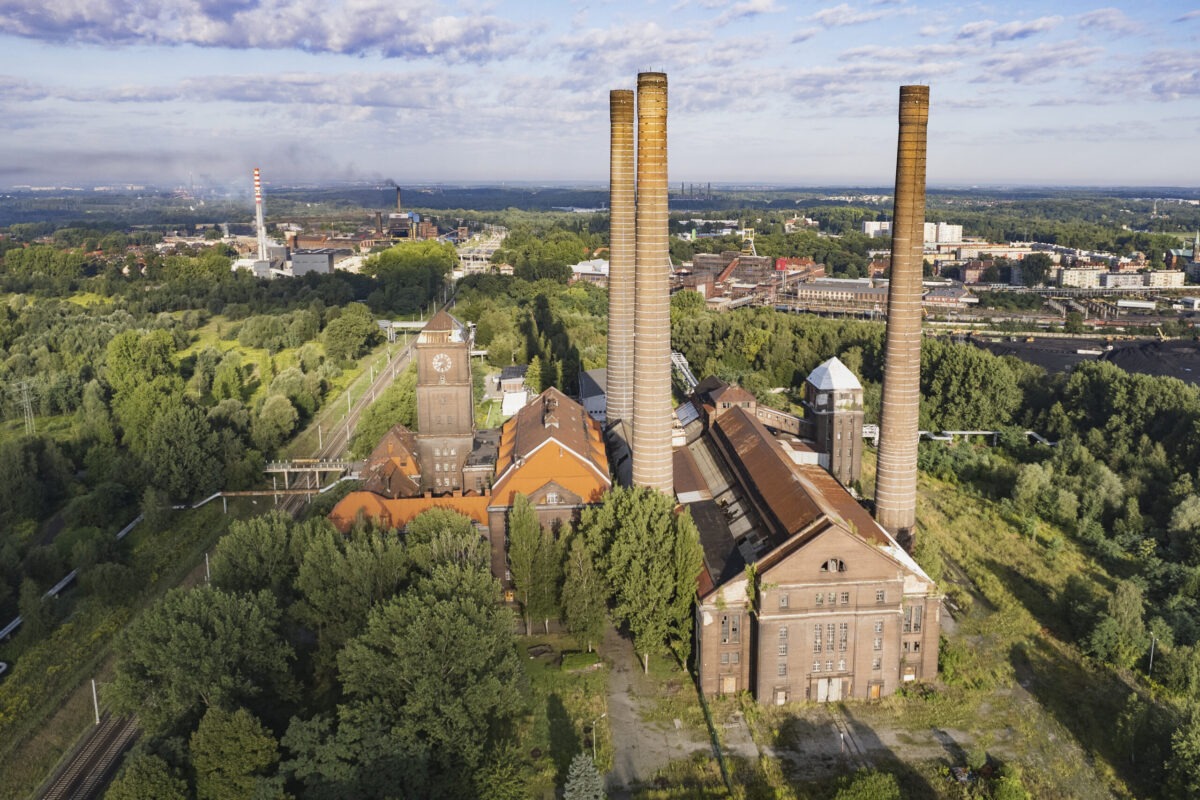
Bytom, Szombierki Heat and Power Plan

GZM is home to many fascinating witnesses of a bygone industrial era – about 40 sites from the GZM’s 16 municipalities are on the list of the so-called Industrial Monuments Route It includes sites from the entire Silesian Voivodeship, related to past industry and technical infrastructure, such as mining, metallurgy, power engineering, railroads, textile industry, brewing, sanitary and water engineering, and others. Making these sites accessible and popular allows contemporary people to bring out the beauty that remains today, and sometimes the fascination and excitement of past grandeur and monumental undertakings.
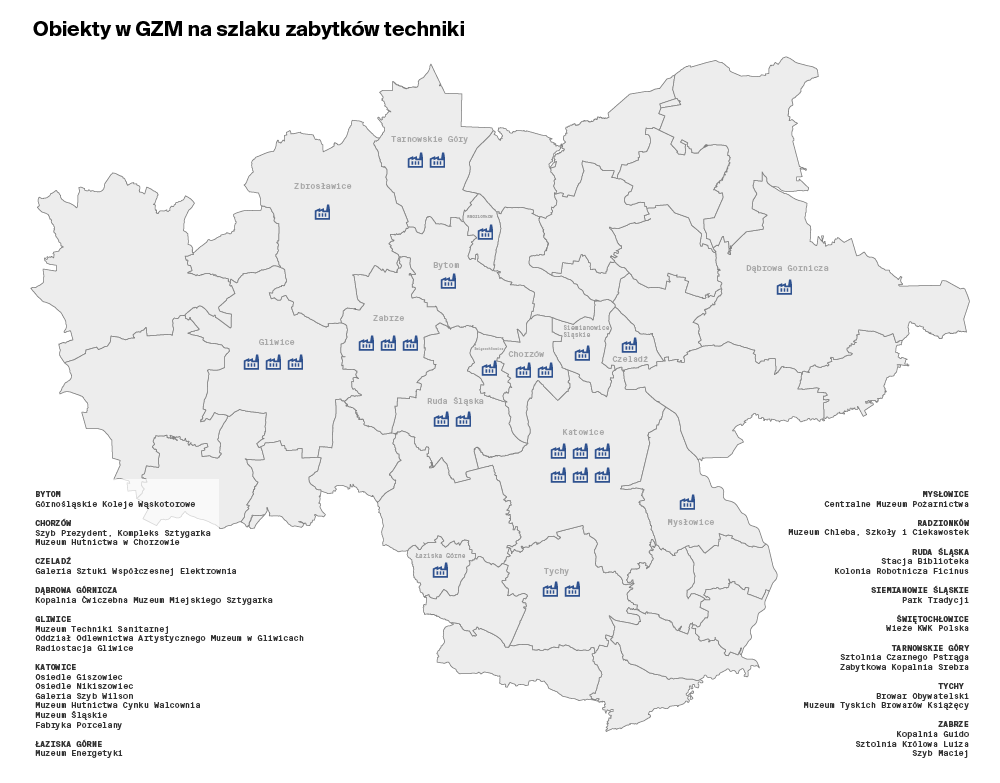
The Route is a kind of own brand and a unique tourist product on a Polish scale. It shows the authentic achievements of the people who lived here, created the industry and developed the cities for more than two centuries. It is also an expression of respect for the history of the region, of which we are heirs.
A unique and valuable event – held throughout the Silesian Voivodeship – is Industriada. It is an annual celebration of the Industrial Monuments Route, usually held in June. It recalls the history of the industrialisation of Upper Silesia and the Dąbrowa Basin (Zagłębie Dąbrowskie), and in a special way brings to light the heritage of this process, when individual sites become places of various types of cultural and artistic events, and some can simply be reminded of.
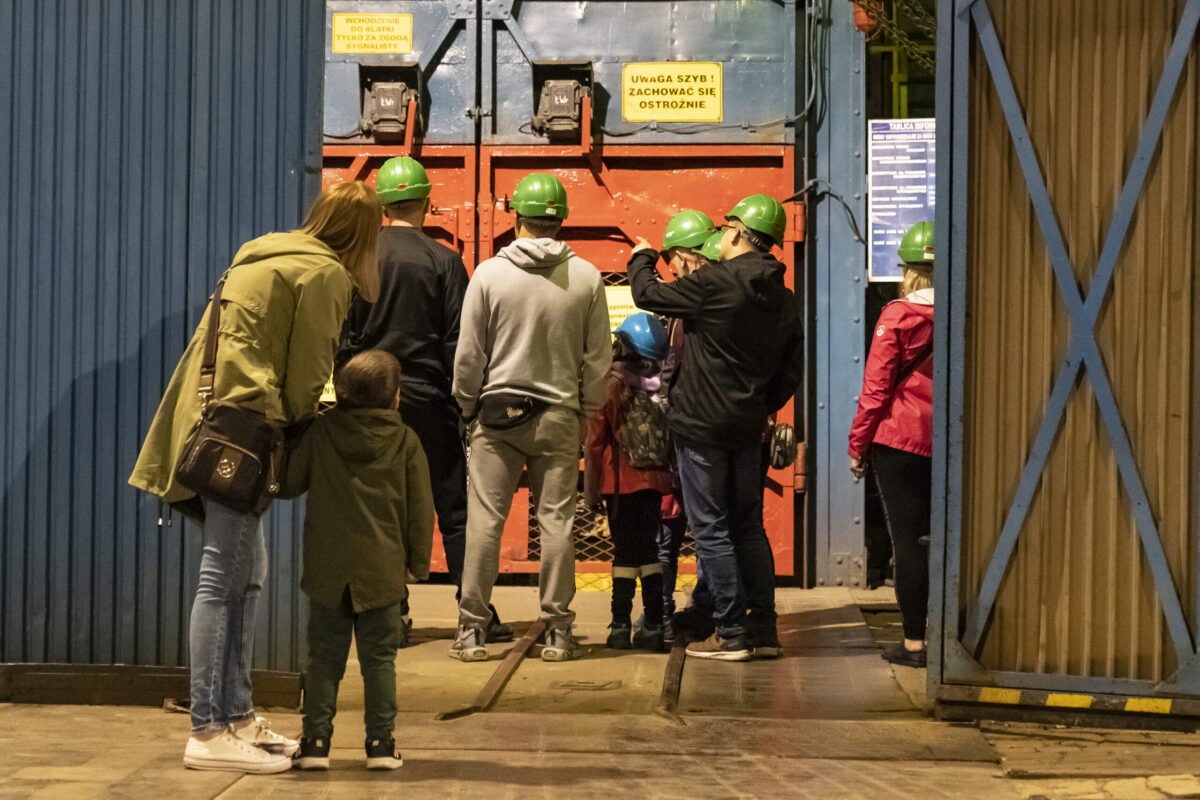
Zabrze, Guido mine
The list of sites from the Industrial Monuments Route is available at zabytkitechniki.pl
Since 2020, the operator of the Route has been the Coal Mining Museum in Zabrze (an undertaking financed from the budget funds of the local government of the Silesian Voivodeship).
